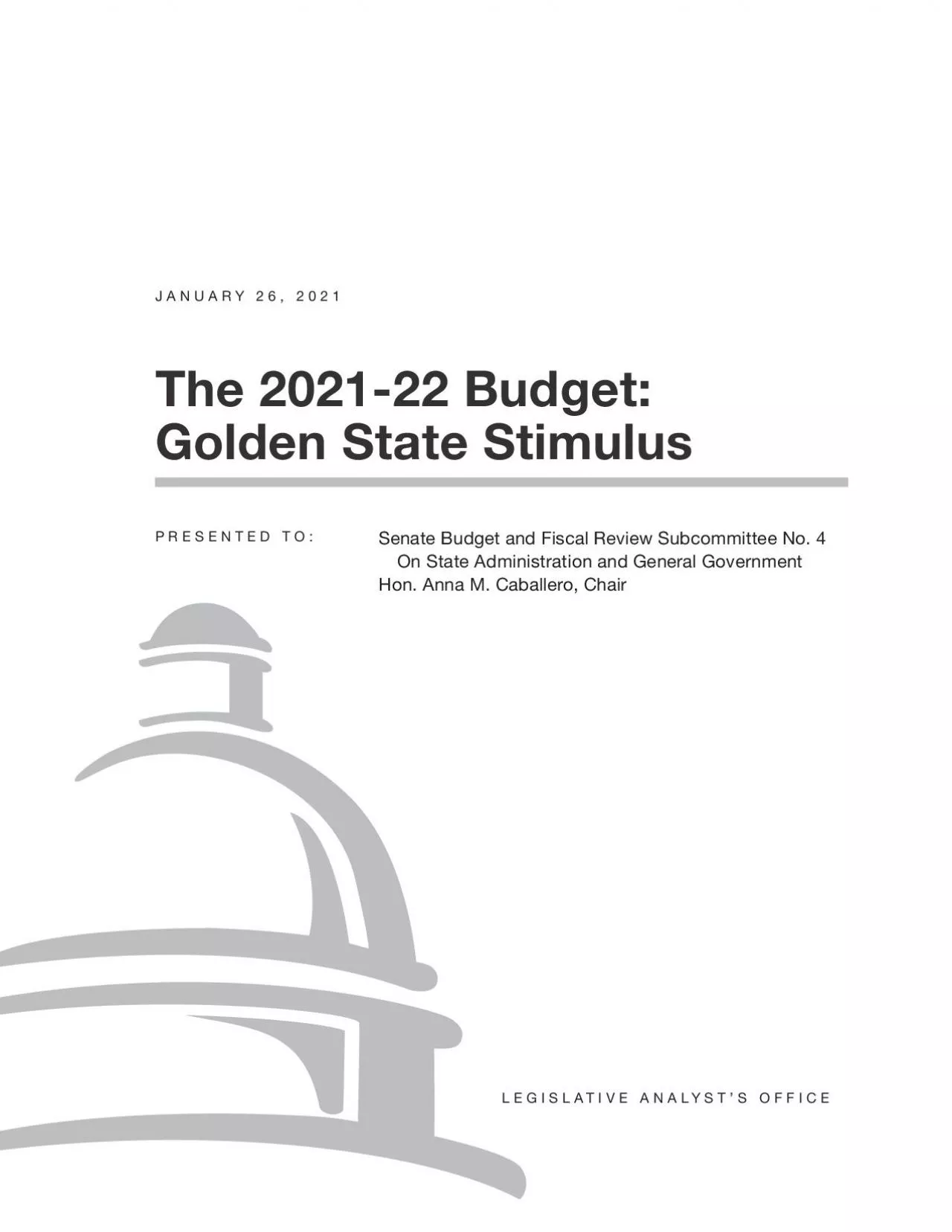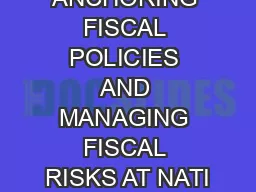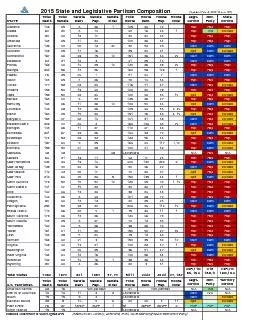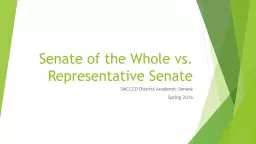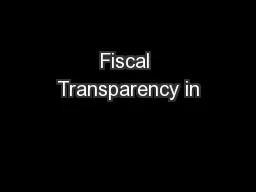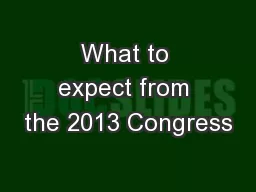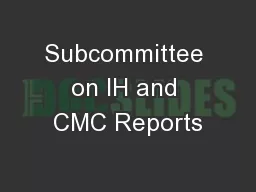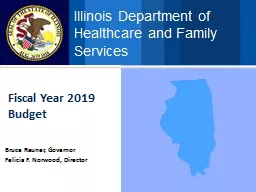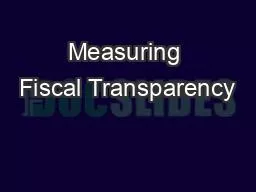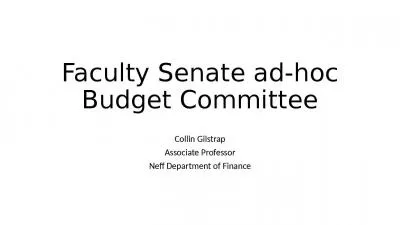PDF-Senate Budget and Fiscal Review Subcommittee No 4
Author : udeline | Published Date : 2021-10-01
On State Administration and General GovernmentHon Anna M Caballero ChairPRESENTED TOLEGISLATIVE ANALYST146S OFFICEThe 202122 Budget Golden State StimulusJANUARY
Presentation Embed Code
Download Presentation
Download Presentation The PPT/PDF document "Senate Budget and Fiscal Review Subcommi..." is the property of its rightful owner. Permission is granted to download and print the materials on this website for personal, non-commercial use only, and to display it on your personal computer provided you do not modify the materials and that you retain all copyright notices contained in the materials. By downloading content from our website, you accept the terms of this agreement.
Senate Budget and Fiscal Review Subcommittee No 4: Transcript
Download Rules Of Document
"Senate Budget and Fiscal Review Subcommittee No 4"The content belongs to its owner. You may download and print it for personal use, without modification, and keep all copyright notices. By downloading, you agree to these terms.
Related Documents

